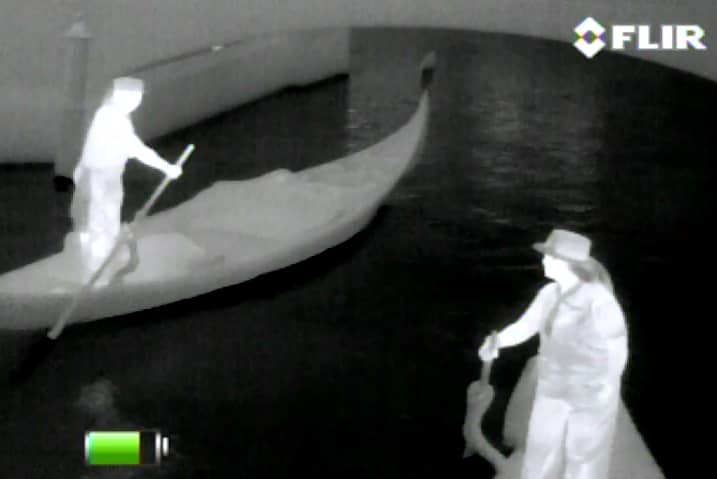FLIR Releases New Scout II Thermal Monocular
Edward Osborne 01.22.15

At SHOT Show 2015 FLIR launched their new Scout II handhelds, a pair of compact thermal imaging cameras built explicitly for civilian use.
The FLIR company pioneered the Forward Looking Infra-Red technology for the military and now designs and builds thermal systems for all kinds of purposes.
If you’re not familiar with it, thermal night vision sees heat not light, so hot and cold spots will be highlighted regardless of whether it’s daylight, dark, or your “target” is obscured by smoke.

Part of FLIR’s expansion outside of the defense market has meant building a commercial handheld system. The Scout family of thermal cameras has been the flagship line for outdoor, hunting, and search and rescue uses of heat-detection technology.
There are three big updates to the new Scout IIs that separate them from the earlier PS24 and PS32 units.
1. The high resolution display
Thermal technology is all about pixels. In order to determine the quality of image a given camera will have, there are three variables that work together. Thermal radiation comes in through a germanium lens, the size of which controls your zoom. Similar to a regular camera, different-millimeter lenses transmit information onto the micro bolometer. This is the actual sensor array, where each pixel is an individual temperature sensor. So when the Scout II 320 has a 320×240 pixel array, it’s tracking 76,800 different individual temperature points. That information from the lens and sensor is then output to a display, which is where the Scout IIs have a serious advantage over previous models. The Scout IIs use a 640×480 pixel display, twice the size of their micro bolometer. This means that the end user will have a much easier time identifying the individual temperature hot spots, and can examine the thermal image that much closer.

2. The ability to capture images and video
Previously, if you wanted to capture thermal images or video of what you saw through a FLIR camera, you had to be carrying one of the large TS or HS series cameras with an additional software upgrade to allow you to save data to an onboard SD cards. These units are twice the size, twice the weight, and twice the price of the compact Scouts.
The new Scout IIs output their video feed through a cable, which means you can plug them into a camera or digital video recorder to capture the feed. Instead of fighting with your phone to peer into the FLIR’s viewfinder, you can record sharp images that accurately reflect what you saw through the device.
We took one on a around Vegas and brought back the images you see in this article.

3. The enhanced lens on the Scout II 320
In additional to a larger detector array, the new 320 model also has an enhanced 19mm lens. That means the image being transmitted into the device is zoomed in that much closer. It’s not a massive jump from wide-angle to telephoto, but think of it like switching from 8x binoculars to 10x. You loose a little bit of peripheral vision, but are also a that much closer to your target. The new lens system means that the Scout II 320 has a maximum detection range of 550 yards to a man-sized heat signature.
The new Scout II 240 and Scout II 320 are available now and cost $1999 and $2999 respectively.

